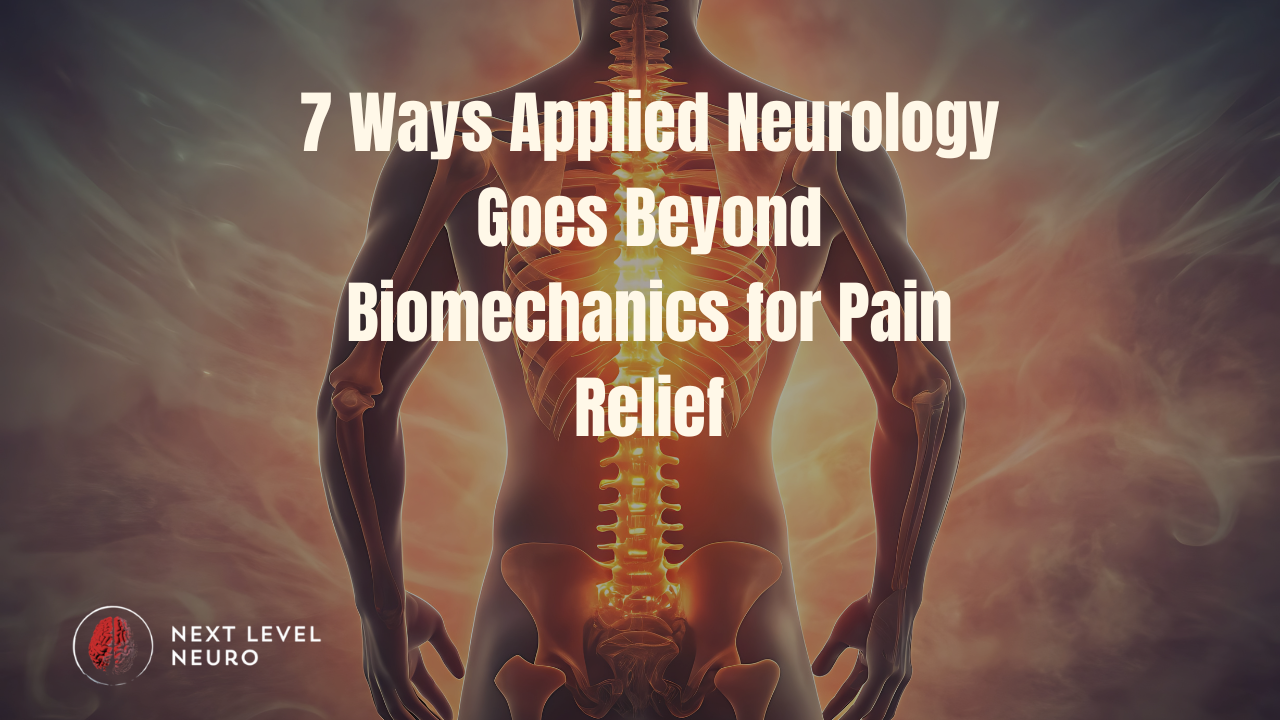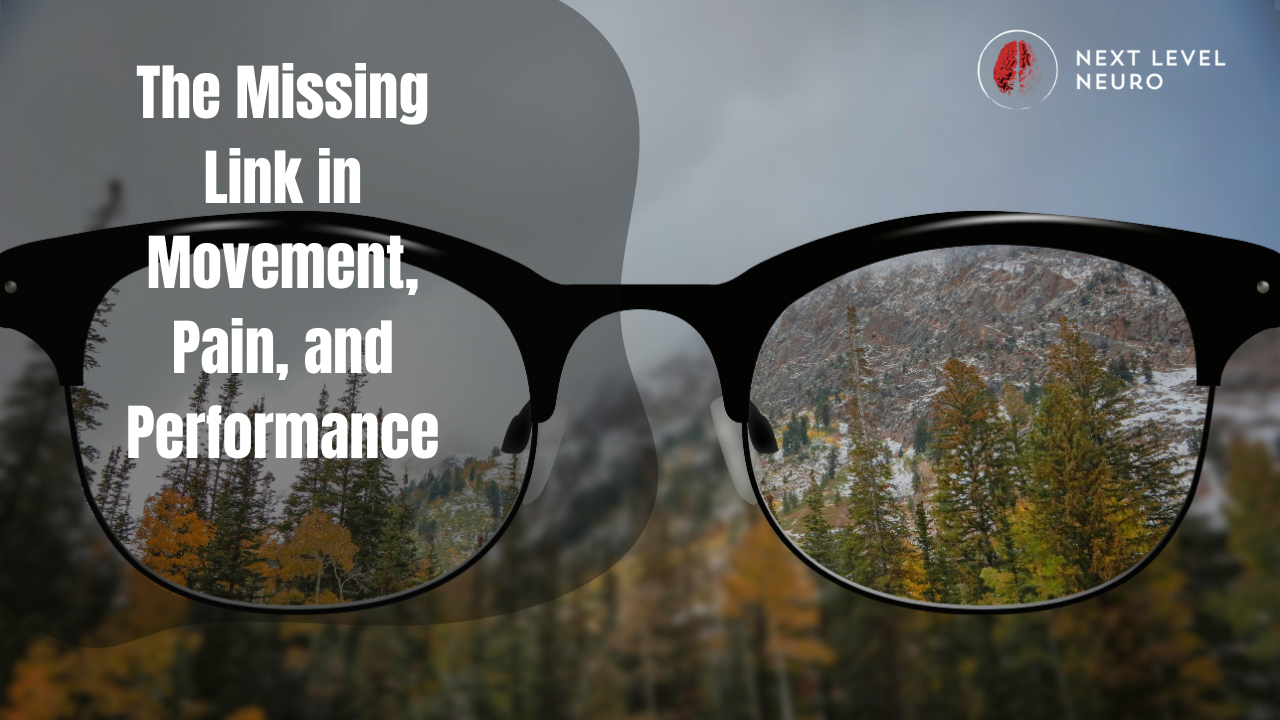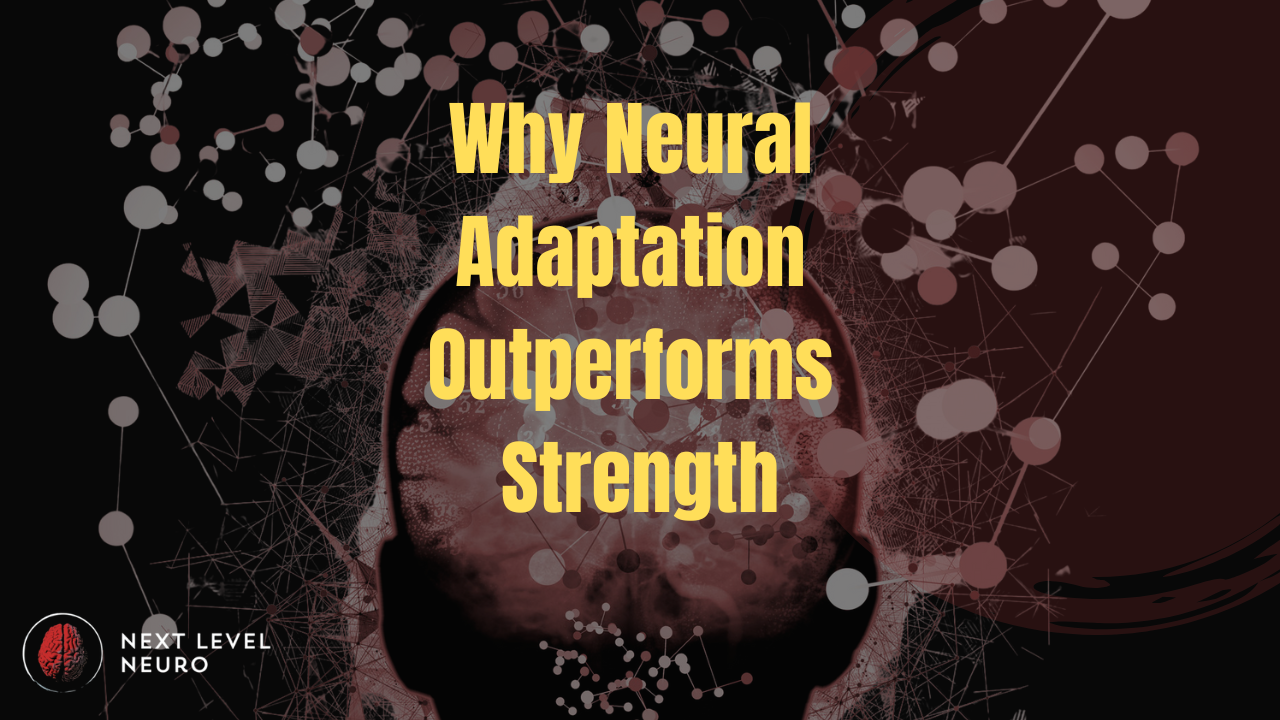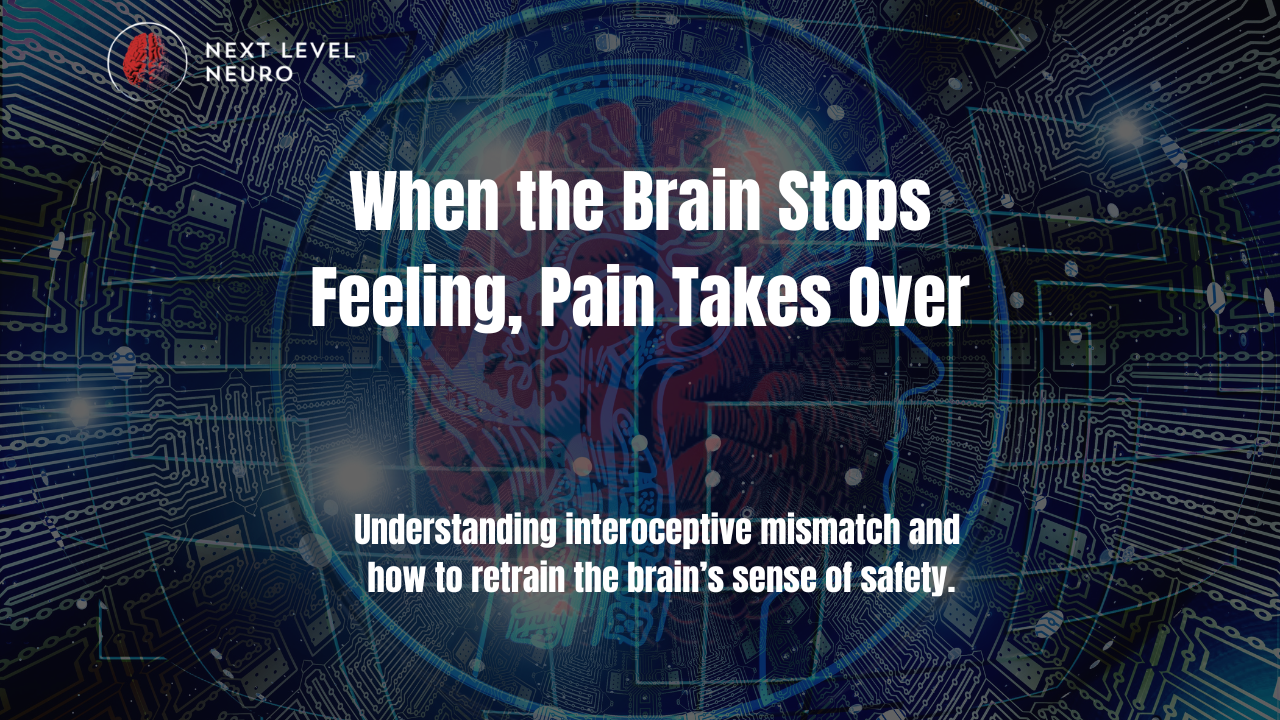Next Level Neuro News
What if pain is not coming from your muscles at all, but from your brain’s decision to protect you?
Modern neuroscience shows that pain, strength, mobility, and coordination are not purely mechanical...
When most people think about “eye health,” they think about vision clarity, whether they need glasses, or how well they can read a distant sign.
But this view is far too limited.
Your eyes don't jus...
You’ve probably been taught that posture is about “core strength,” “tight hip flexors,” or “glute activation.”
That’s the biomechanical model most trainers and therapists inherit..
...but it’s incompl...
Most therapists are trained to treat dizziness like a vestibular deficit.
And yes...
....sometimes it is.
But in applied neurology, dizziness is rarely a vestibular problem in isolation.
More often, ...
Why Neural Adaptation Changes Everything
Over the last decade, our understanding of human performance has been transformed.
Strength still matters.
Movement quality still matters.
Mindset still matte...
How Training the Brain Changes Everything
Ten years ago, strength was the revolution.
We discovered that stronger clients moved better, healed faster, and built resilience that nothing else could mat...
Why Recovery Is Not Rest, It Is Rewiring
Coaches and therapists often talk about recovery as if nothing more than a break between sessions.
In applied neurology, recovery is not a passive pause.
It ...
When Warm-Ups Go Wrong
Most coaches and therapists agree that warm-ups prepare the body for performance.
Few realize that every warm-up also prepares or overwhelms the brain.
In applied neurology, w...
Why Trust Is the Hardest Part of Coaching
Every practitioner knows that client progress depends on trust.
But earning that trust often takes time, sometimes weeks or even months.
In those early ses...
When Progress Stalls, the Brain Is Speaking
When a client stops progressing, most practitioners immediately tweak the plan.
Add mobility. Adjust a cue. Increase the load.
But what if the problem is...
Before prescribing drills, mobility work, or load, it helps to ask one question:
Does your client actually feel what is happening inside their body?
Most therapists and coaches evaluate what they ...
If you have ever corrected a client’s form only to watch the same problem return a week later, you are not alone. The issue may not be strength, mobility, or compliance.
It may be sensory mismatch.
...The Moment Every Therapist and Coach Knows
You cue a client to perform a squat.
They move with confidence, convinced their form is perfect.
Yet you see it right away. Their torso collapses slightly ...
Are we on the cusp of a paradigm shift in therapy, one that shifts focus from muscles and joints to the nervous system that governs them?
The field of therapy is at a pivotal turning point. For de...
Have you been thinking about learning more about the role of the brain and its effect on training?
Applied neurology is this generation's next big educational push, but here’s the truth: drills alone...
Why Trainers Need a Brain-Based Framework
Strength training has always been about more than muscles. The nervous system is the real driver of performance, movement quality, and even recovery. When th...
If you have been working with clients for any length of time, you already know the story.
Someone walks in with back pain, knee pain, or shoulder pain that has been haunting them for years. They hav...
Why Pain and Habits Feel So Hard to Change
If you’ve ever wondered why pain lingers long after an injury heals, or why old movement patterns keep coming back, the answer may surprise you.
It’s not ...
Neural tags explain what biomechanics can't.
Why does pain linger long after the injury heals? Why do clients fall back into old movement patterns no matter how hard they try?
The answer lies in th...
A New Way Forward for POTS Clients
A New Lens for an Overlooked Condition
Postural Orthostatic Tachycardia Syndrome (POTS) is one of those diagnoses that tends to leave both patients and clinicians ...
Why Your Nervous System Comes First
Most people treat warm-ups like a checklist: roll this, stretch that, maybe jog a few minutes until they break a light sweat. Traditional movement preparation i...
Do all carpal tunnel patients have to resort to surgery? What if new, science-backed approaches could reduce the stress on the median nerve and offer lasting relief?
More Than Just Wrist Pain
Car...
The Myth: Tension as a Biomechanical Problem
For decades, the health and fitness industry has told us a simple story:
-
If your hamstrings are tight, stretch them.
-
If your shoulders are tense
...
























